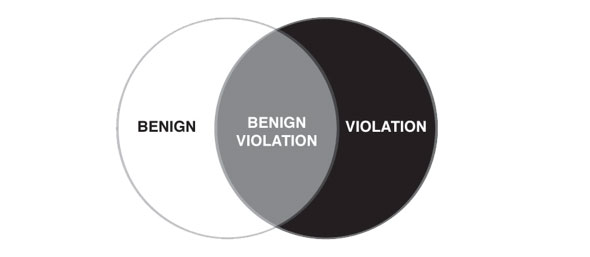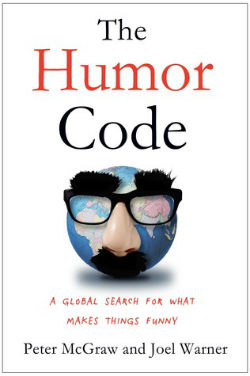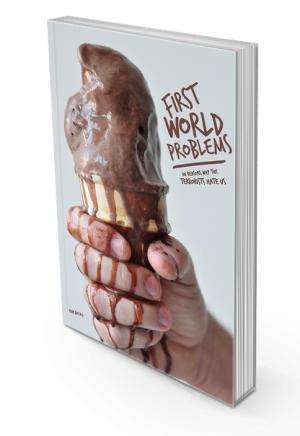Why are you laughing? It’s a question I’ve asked myself and that’s what Peter McGraw and Joel Warner set out to answer in their book, The Humor Code: A Global Search for What Makes Things Funny.
Over the last few years I’ve become increasingly interested in how humor works. After all, if I’m going to write humorous books I should have an understanding of how humor works beyond only being able to give an explanation that’s no better than saying it’s voodoo magic. The quest has led me through several pop psychology and humor books, with the latest being The Humor Code.
The Humor Code takes Peter and Joel on an adventure around the world, from New York and LA to Japan, Tanzania, and Palestine, all in search of what makes people chuckle. They seek to answer questions about humor, including:
- Who is funny?
- How do you make funny?
- Why do we laugh?
- When is comedy lost in translation?
- Does humor have a dark side?
- Can you find humor where you least expect it?
- Is laughter the best medicine?
What makes something funny?
Everyone knows whether or not they find something funny, but I’d bet very few people understand why they find something funny. It seems odd that for the vast majority of my life I’ve engaged in something yet I had no idea why. The Humor Code covers a few humor theories provided throughout history along with their take on humor.
Humor Theories
Superiority theory
Plato and Aristotle introduced the superiority theory, the idea that people laugh at the misfortune of others.”
N + V theory
Thomas Veatch posited what he called the “N + V Theory,” the idea that humor occurs when someone perceives a situation is a violation of a “subjective moral principle” (V) while simultaneously realizing that the situation is normal (N).”
Incongruity theory
… the idea that humor arises when people discover there’s an inconsistency between what they expect to happen and what actually happens.”
Coming into this book, incongruity theory made the most sense to me. Comedy involves taking assumptions people have about a topic and twisting them or replacing them with a different “mental frame” which provides an incongruity with humor being the result. Incongruity theory makes sense, though it isn’t completely satisfying. A mental frame has to be shattered, but not every shattering of a mental frame results in humor. Expecting my car to start when it’s 20 degrees below zero outside and it doesn’t leads to incongruity and no humor (at least for me).
Peter McGraw and Joel Warner acknowledge that incongruity theory is close, but they extend the theory with the benign violation theory.

According to the benign violation theory:
humor only occurs when something seems wrong, unsettling or threatening (i.e., a violation), but simultaneously seems okay, acceptable, or safe (i.e., benign).”
Peter and Joel test the benign violation theory across the globe and in several experiments through the brilliantly named Humor Research Lab (HuRL). The result is an entertaining and insightful examination of humor in almost every form it appears (dealing with tragedy, laughter as a signal that things are okay, stand up comedy, New Yorker cartoons, etc).
The benign violation theory is at the heart of all laughter and humor, though it won’t provide you with a magic formula for cranking out the funny (there probably isn’t one).
While reading The Humor Code, it seemed that creating humor is a lot like cooking a meal. The benign violation is the “core” ingredient with other variables (superiority theory, specificity, surprise, delivery, etc) acting as a spice. That would explain why you can have two people tell the exact same joke, but a huge difference in how funny the joke is based on the delivery. Also, just as food is cultural, so is humor, as The Humor Code documents very well with trips to Japan and Palestine.
An example of this comes from Norm MacDonald telling what many would consider to be a bit of a lame joke, yet his delivery transforms it into something amazing.
How to create humor
Using the benign violation theory provides a few methods for creating humor. One could take violations and make them benign or you could take a normal situation that’s benign and turn it into a violation. This isn’t just a good way to approach creating humor, but is also a better way to live–finding the humor in all situations. While ruminating on this point, I stumbled across a now favorite quote of mine that sums up this approach to life:
“Always be comic in a tragedy. What the deuce else can you do?”
– GK Chesterton
The Humor Code is an entertaining look at the human mind, why we laugh, and what on earth is so funny.

